Fatal Mi-8AMT Loss of Control – Inflight and Water Impact off Svalbard (RA-22312 of Convers Avia)
On 26 October 2017 Mil Mi-8AMT RA-22312 operated by Convers Avia JSC for the Trust Arktikugol coal mining company, impacted the water of Isfjorden, Svalbard. All 8 persons onboard died in the 2°C Arctic waters in an accident that highlights why survivability measures are crucial.
From 1961 more than 17000 Mi-8s have been produced making the 13 t helicopter the world’s most produced helicopter type.
According to the Svalbard Treaty of 1920, Norway has sovereignty over the Svalbard Archipelago. Signatories of the treaty have the right to exploit the natural resources on the archipelago. The Russian company Trust Arktikugol started mining activities in Barentsburg in 1932. Convers Avia, formed in 1995, is based inTver, NW of Moscow and has a fleet of around 30 helicopters. They received permission in 2011 from the Civil Aviation Authority Norway (CAA-N) to provide helicopter services on behalf of Trust Arktikugol, replacing GazAvia (formerly Spark +), who had suffered an accident in 2008. While Norway is an EASA Member State, EASA rules are not applied to Svalbard, which is outside the EU/EFTA European Economic Area (EEA).
The Accident Flight
The Accident Investigation Board Norway (AIBN) explain in their safety investigation report that the First Officer was the Pilot Flying and RA-22312 took off from Pyramiden at 14:43:19. They had flown the reverse routing 3.5 hours earlier.
The landing site at their destination, Heerodden (also known as Kapp Heer), was built during the 1970s, it is in Class G airspace, approximately 25 m above sea level and 100-150 m from shoreline.
It is equipped with a Non-Directional Beacon (NDB), which was operational on the day of the accident and an automatic meteorological station measuring temperature, relative humidity, pressure, wind speed and direction. The day and night minimas for takeoffs and landings were: 450 m visibility vertically, and 5000 m visibility horizontally.
Convers Avia helicopter operations on Svalbard are based on visual flight rules (VFR). Both pilots on the RA-22312 were approved for VFR flights only. The helicopter was not equipped with Ground Proximity Warning System (GPWS). According to Convers Avia was this the reason for the limitation on instrument flying given by the Russian Aviation Authority.
At 14:46:58 the Heerodden tower officer contacted RA-22312 and informed about the weather conditions at the heliport, where there were snow showers, horizontal visibility 1000 meters and vertical visibility 100 to 120 meters. RA-22312 confirmed this information.
At 14:50:01 the Commander requested activation of the “anti-icing system”, whereupon the flight engineer informed that the “anti-icing system” was in “auto mode”. The Commander then requested that all “anti-icing” should be switched on.
At 14:54:29 they reported to ATC passing reporting point Bravo and would report next at Alpha.
 14:57:10 RA-22312 started the approach to Heerodden and initiated descent from an altitude of approximately 235 meters.
14:57:10 RA-22312 started the approach to Heerodden and initiated descent from an altitude of approximately 235 meters.
At 14:58:59, from an altitude of 145 meters, and with a speed of approximately 200 km/h, RA-22312 climbed back to approximately 200 meters’ altitude. The approach to Heerodden then continued at 200 to 215 meters’ altitude with heading 225 degrees and a somewhat varying speed of between 190 and 210 km/h.
20 km from Barentsburg, at 15:01:22, the First Officer alerted the Commander that they were about to pass “reporting point Alpha”. The Commander then contacted Longyearbyen tower. He reported that RA22312 was “abeam Alpha” and that the next position report would be 5 NM from Heerodden. The Commander further informed the crew about “approach path”, radar altimeter status, and the areas of responsibility of each of them during approach, as well as details on the landing platform. This was done at 15:02:13. At that time RA-22312 was approximately 17 km from Heerodden.
At 15:02:35 RA-22312 was called up by the tower officer on Heerodden who reported that the wind was now from 090 degrees, 1 to 2 m/s, horizontal visibility 1000 meters or less, perhaps 900 meters, and that the vertical visibility was approximately 100 meters. The Commander then confirmed and ordered 15:03:05 descent to 100 meters’ altitude. The descent was initiated at 15:03:45 with heading 220 degrees. The distance to the landingsite was now 10 NM. During the descent, speed, heading and distance were constantly monitored and read out by the Commander.
At between 1450 at 1500 an Airbus Helicopters AS332L1 Super Pumas, operated by Lufttransport (a subsidiary of NHV) for the Governor of Svalbard (Sysselmannen), passed Heerodden. It’s Commander described the weather as: “Quite strong wind from the east, intense blowing snow and low visibility, the only challenge that day was the dense snow showers and the strong wind, which led to some turbulence. Additionally, twilight started setting in at around 1500 hrs.”
At 15:03:43 the “Ice Formation Annunciator” came on, and the flight engineer on board the helicopter confirmed to the Commander that the system in question was manually activated and that electricity consumption were within allowable limits.
At 15:04:43 the Commander requested that horizontal flight should be reestablished and that no further descent should take place. The altitude was then 90 meters, and the vertical speed indicator (VSI) was monitored and verified to be 0 m/s.
At 15:05:26 they reported they were 5 NM “inbound” Heerodden.
During the seconds that followed, from 15:05:51 to 15:06:41, the helicopter climbed to an altitude of 140 meters, which the Commander pointed out to the First Officer. Their heading was…200 degrees, and the Commander then asked the First Officer to establish a speed of 90 km/h, but corrected this to 80 km/h. The Commander then called out that the altitude was now 200 meters, that they were climbing, and at the same time requested descent to 80 meters’ altitude. The First Officer confirmed that he had made the correction and started the descent.
During the time interval from 15:06:50 until the time of the accident, RA-22312 continued to descend in addition to reducing the speed, and at the same time the heading shifted more and more towards the left to 170 degrees. At 15:07:48 the radio altimeter “altitude alert signal” (400 Hz tone) sounded…
The radio altimeter (RADALT) alarm was set to 60 m.
…the helicopter was still losing altitude with heading 170 degrees. The distance to Heerodden was now approximately 2 km. At this point in time the helicopter’s altitude was 40 meters, with a speed of 50 km/h, while the heading shift towards the left continued. The CVR recording shows that the Commander at 15:07:53 made the First Officer aware of the significant change of direction. RA-22312 impacted the water surface at time 15:08:04…
Witnesses at the destination realised the aircraft had struck the water and initiated an emergency response.
The AIBN Safety Investigation
The AIBN Safety Investigation: Wreckage
The helicopter wreckage was found submerged upside down on a flat, sandy bottom at a depth of 209 meters. AIBN contracted the Maersk Forza to assist with the recovery. The offshore support vessel is equipped with a helideck, a 250-ton crane and two Remotely Operated Vehicles (ROVs), each with a pair of manipulator arms.
Following a search for bodies, the ROVs were used to thread a chain between the main rotor pitch links and around the main rotor shaft. The wreckage was recovered on board on 4 November 2017.
The damage evident indicate that it hit the water with the rear of the main fuselage.

Damage to the Rear Fuselage of Mil Mi-8AMT RA-22312 of Convers Avia in Svalbard (Credit: AIB Norway)
Damage to the tail boom was caused by impact of one or more main rotor blades prior to the impact with the water surface.
No pre-accident technical defects were found when the wreckage was examined in Norway that could explain the accident. Not deemed relevant to the accident but one bolt in the flying control system was found to have failed and this was determined to have been subject to excessive torque on installation. The Mil Moscow Helicopter Plant requested operators conduct a fleet check but no other cases were identified. They also updated maintenance data to specify torque values for all flying control bolts rather than rely on standard practices.
The AIBN Safety Investigation: Data
The helicopter was equipped with a P-507M digital Cockpit Voice Recorder (CVR). The CVR was not equipped with an Underwater Locator Beacon (ULB) but was recovered with the fuselage. The recording was successfully downloaded, of good quality and useful for the investigators.
The helicopter was also equipped with a BUR-3-2 Flight Data Recorder (FDR). The FDR, which also lacked a ULB (the ICAO Annex 6 deadline was 1 January 2018), was mounted in a container underneath the tail boom and was struck by a main rotor blade during the accident. It detached and was found 80-90 m from where the fuselage came to rest. The memory module had however separated from the FDR and was not found.
One of two portable GPS units onboard, a Garmin 695, was found to contain data on the last flight.
During the last minutes of the approach towards Heerodden, the speed was reduced from approximately 200 km/h down towards 13 km/h. During this phase of the flight, the helicopter turned towards a more south/southeasterly heading relative to the normal heading of approximately 200 degrees, which is usual during approach towards Heerodden when arriving from Pyramiden. The helicopter, in the course of the last minute before the accident, turned left to a heading of 135 degrees. The distance from the helicopter base was then approximately 2.5 km. Data from the last seconds of the flight show a quick turn to approximately 275 degrees. The data from the last stage are most likely unreliable since the helicopter’s movements and attitude may have had an impact on the GPS antenna’s reception conditions.
NORSAR (Norwegian Seismic Array) and KRSC (Kola Regional Seismological Center) cooperate on seismology and infrasound and three sensors had been installed in Barentsburg and Heerodden.
Based on triangulation..it has been possible to pinpoint a quite precise location and the correct time when the helicopter impacted the water. Further it has been possible to estimate the helicopter’s changes in speed relative to the infrasound microphone’s location near Heerodden. The helicopter’s main rotor generates a sound frequency of 16 Hz. The Doppler effect would alter this frequency depending on whether the helicopter is approaching or moving away from the sound sensor or alters its speed. In a report from NORSAR on what their sensors captured at the time of the accident, a time/frequency diagram appears, which supports the speed data registered by the Garmin GPS 695 unit, that is: that the helicopter immediately before the impact with the water had a very low speed.
The AIBN Safety Investigation: Survivability
Only one of the 8 bodies was recovered despite an extensive search and no bodies remained in the wreckage.
The deceased was not found to have any injuries which would indicate that he was physically unable to evacuate the helicopter unaided. The report concludes that the cause of death was drowning, possibly combined with hypothermia
The Institute of Air Medicine at the University of Oslo (FMI) provided the following background to the AIBN:
As a homeothermic organism, we humans operate optimally when the central parts of our body have a temperature of about 37⁰C. We maintain this temperature by balancing heat production and heat dissipation. In cold environments, both physiological and behavioral changes will help maintain this constant body temperature. Transport of heat around the body occurs via the bloodstream. An early response to exposure to cold to reduce heat loss is to reduce blood flow to the peripheral parts of the body.
The heat loss is determined by the temperature gradient between the environment and the body. In addition, moisture towards the body will also be important. It is four ways the body can deliver heat: Convection / heat flow, radiation, conduction/heat conduction and evaporation. In normal conditions, the greatest heat loss from the human body will occur via convection / heat flow. Immersed in water however, it is the conduction that is the deciding factor. Heat will be led from the body and to the environment that is in direct contact with the body’s surface, and water conducts heat 20 – 30 times faster than air.
Immersion in cold water is therefore an extreme challenge for us humans. It is common to divide such an event into four different phases. It is important to be aware that each of these phases is life-threatening, and the outcome can be fatal in each of these phases.
The four phases are: 1. Initial cold shock (0-3 min) 2. Short-term exposure (3-30 min) 3. Long-term exposure (more than 30 minutes) 4. Post immersion response (during and after rescue).
The dangers associated with each of the first three steps are caused by the cooling of different parts of the body, starting with the cooling of the skin (initial response) and further spreading through the muscles that are closest to the body surface, especially in the arms and legs (short-term exposure ). Finally, the cooling will spread to the body’s core (long-term exposure). Previously, immersion in cold water was associated with the development of hypothermia, but it is only after one has come through the first two phases of the immersion that one is in a time phase where it is natural to talk about hypothermia.
Initial cold shock is one of the strongest stimuli we can be exposed to. The response will come about immediately and be strongest after approximately 30 seconds and will last for up to three minutes. The response greatly affects circulation and breathability. There will be an immediate contraction of peripheral blood vessels throughout the body that will increase blood flow back to the heart due to the hydrostatic pressure from the water around. At the same time, one will have an immediate increase in heart rate, with the result that blood pressure increases. This increases the strain on the heart. For people with heart disease, this can be fatal. Individuals with high blood pressure are at risk of developing a heart failure, or stroke. It will also increase the level of hormones that may affect the heart rhythm of vulnerable individuals. It is also known that immersion of the face can lead to an immediate cardiac arrest in some exposed individuals.
A sudden cooling of the skin will also initiate a respiratory response. This response is an almost instantaneous “gasp” which in turn will trigger a violent hyperventilation. This in turn will create both dizziness and confusion during the first phase of an immersion. This gasp is also so large that the ventilation will be close to the total lung capacity of the individual. Breathing fast on almost total lung capacity is basically heavy and very uncomfortable. When in water, the discomfort will be further enhanced, which may contribute to the feeling of panic in the individual who has ended up in the water.
Another important factor to be taken into account is that the ability to keep the breath is drastically reduced in cold water, from over one minute to well under ten seconds. If one is trapped inside a helicopter, the possibility of being able to swim out will also be very limited if there is no rescue equipment available to the person. It is the reduction in the ability to hold the breath that is considered the most dangerous response in an otherwise healthy individual. In addition, the risk of inhaling water, if the sea is in such a condition that waves will wash over the person has to be considered.
The probability for survival in cold water is illustrated in the following figure:
See also: The Dangers of Cold Water Immersion
It is not clear if any of the occupants had completed Helicopter Underwater Escape Training (HUET) but it is unlikely the passengers would have done if they were perceived not to be flying ‘offshore’.
AIBN note that:
The helicopter was not equipped with neither external Emergency Flotation Gear nor life raft. Such equipment was not required by aviation authority regulations.
[CAA-N] BSL D 1-8 sets requirements for emergency equipment for single engine aircraft flights and additional requirements for flights on Svalbard. Similar requirements for multiengine helicopters are not described.
Neither crew nor passengers were wearing survival suits or lifejackets, only ordinary winter clothes appropriate for the weather conditions.
Lifejackets were aboard but stowed under the side facing seats (airline style). The seats have only lap straps and no upper torso restraint. A pair of cabin windows appear to be openable, put the rest do not appear to be push out windows and there is no associated exit lighting.
The AIBN note that not only were the rear clamshell doors damaged on impact but the aircraft was fitted with a cargo hook and so the associated floor hatch was open, increasing the potential for rapid ingress of water.
Large black rubber mats were found loose in the cabin, a potential impediment to egress and photographs appear to show other loose items that had the potential to cause injury, block exit routes or be snagging hazards.
At the time of the accident, the air temperature was approximately -2.5°C and the water temperature approximately +2ºC. Additionally, there was an easterly wind of approximately 15-20 knots, which generated waves. According to a report from the Institute of Air Medicine, exposed to these conditions without survival suit and without lifejackets meant that those on board [if they egressed the aircraft] probably only managed to stay on the surface for a few minutes.
No signal was detected from the COSPAS SARSAT ARM-406P Emergency Locator Transmitter (ELT), although none would be expected once the aircraft capsized and sank. After the alarm was raised from the shore both Lufttransport SAR AS332L1s operated for the Governor of Svalbard were despatched, arriving at 1615 and 1630 respectively. No debris or survivors were evident. A wide range of other assets and personnel were deployed on the day and immediately after.
AIBN Safety Analysis
AIBN Safety Analysis: The Cause of the Accident
AIBN concludes that the helicopter hit the water surface with the tail portion of the fuselage first at low or no speed forward. This indicates the loss of visual references in poor visibility with subsequent loss of control over the helicopter.
…a comprehensive assessment of the weather conditions during the critical part of the flight, shows that it was possible to fly according to visual flight rules outside of the heaviest snow showers. AIBN has, however, learned that in the area in question there may occur substantial local variations in weather conditions, which may quickly be of importance for whether a flight should be continued or discontinued.
However:
…this flight was operationally routine for the flight crew. Being familiar in an area can be both positive and negative, in relation to the risk that one can be exposed to, and how the assessments of the relevant weather conditions were handled in the decision-making process of the flight crew.
AIBN observe that familiarity can result in complacency. They do however observe the Aircraft Commander proactively requested anti-icing be activated 8 minutes before the system detected icing conditions. The investigators also concluded the system was functioning as intended.
Based on an overall assessment of available information, the Accident Investigation Board finds it likely that wind conditions in Isfjorden some kilometers north of Heerodden may have been quite different than on the landing site itself. It is therefore a probability that wind conditions contributed to the accident, by a combination of the helicopter’s low speed, low altitude and the changing wind conditions, including a tail wind together with a crosswind component.
CVR recordings…indicate that the first phase of the approach towards Heerodden was controlled and routine. The Commander who was Pilot Monitoring called out speeds and heights. In the final phase, just before the accident, the First Officer had problems following the expected altitude profile and there were altitude and course variations, which was pointed out by the Commander. The radio altimeter audio warning was activated when the helicopter descended through 60 meters altitude. The communication in the last 10 seconds before the accident was characterized by the crew’s spatial disorientation. Nor did it appear from the recordings that the Commander intended to take over the control of the helicopter.
…visibility conditions were significantly lower than the minima that were set by Convers Avia.
It is conceivable that the crew of RA-22312 chose to continue the approach in the hope that they would get a “window” with better weather conditions closer to Heerodden since the visibility varied between snow showers. The tower operator’s assessment of visibility near the time of the accident was horizontally approximately 900–1 000 m and vertically approximately 100 m. The conditions therefore facilitated the possibility of loss of visual references at low altitude and low speed.
The damage on the helicopter suggests that it has hit the water with low or no speed forward, and with a nose up pitch attitude. This indicates the crew’s loss of visual references in the poor visibility
AIBN postulate that the crew may have suffered from “get-home-itis”, or “plan continuation bias”, i.e. following “the plan” even when evolving circumstances justify adaptation.
The tendency to want to continue, despite the situation having changed, seems to be stronger as the end of a task approaches, such as when approaching an airport. It is especially flying under VFR conditions that increase the risk of accidents, where in order to arrive, one fly into such poor visibility conditions that visual references are lost. In such circumstances, the danger of losing control of the aircraft increases dramatically.
This may explain that they continued the approach to the base at Heerodden even though the visibility was reported from the tower officer to be far below defined weather minima. It may be that a combination of “plan continuation bias” and lack of instrument ratings for the pilots could be factors that have contributed to the accident.
The accident also occurred near dusk, perhaps creating added pressure to complete the flight. The AIBN believe the flightcrew experienced reduced visibility just prior to the accident and that they…
…stretched the safety margins defined by declared VFR weather minima so far that they did not have the opportunity to get out of the situation without climbing out into IMC conditions. The landing site at Heerodden did not have equipment for instrument approach, and the helicopter company allowed only VFR operations on Svalbard. The pilots flying the RA-22312 also did not have instrument ratings. When the tower at Heerodden reported visibility significantly less than the VFR minima defined for the landing site, they should have aborted the approach, and diverted either to Svalbard Airport where the approach could have been performed under visual conditions or to Pyramiden.
AIBN Safety Analysis: Survivability
Even though the helicopter lacked an Emergency Flotation System (EFS) AIBN believe the aircraft floated briefly, albeit with water rapidly entering the cabin, before capsizing.
Since none of the crew members or passengers were found in the helicopter after it was recovered, there is reason to assume that all of them had been able to evacuate the helicopter after it hit the water. Based on the autopsy report for the one person that was found on the sea bed, it can be assumed that the impact with the water did not cause the persons on board such injury that it would have disabled them to such a degree that they could not evacuate the helicopter.
None of the passengers had put on the lifejackets that were placed in a pocket under each seat in the cabin. One of the lifejackets was found uninflated on the sea bottom. The rest were still in their pockets underneath the passenger seats. This also indicates that very little time elapsed from the helicopter hitting the water until it became necessary to evacuate. Based on the available information about the possibility to survive in water temperature of 2°C, the AIBN believes that those on board had very little opportunity to survive without protection in the form of survival suits. Since RA-22312 was not equipped with external emergency floats or liferaft, everyone on board had to evacuate in to the sea. They only had normal winter clothing that did not prevent water ingress with rapidly following cold shock and hypothermia. It is very likely that they quickly lost the ability to stay afloat on the surface.
This accident…
…clearly shows that aircraft operating in the arctic region should be equipped with adequate emergency equipment which provides a better chance to survive until rescue is a fact. In addition to the aircraft’s equipment, personal equipment such as life vests and clothing that protects from exposure to hypothermia in water should also be a part of the barrier that increases the probability of survival.
These conclusions are of course equally valid for most overwater operations.
According to [Trust Arcticugol]’s director after the accident, the issue of installing additional equipment and furnishings (i.e. life rafts, survival suits, emergency flotation gear, etc.) is currently being considered. This issue is being discussed with the supplier of the replacement helicopter. Without being completely comparable, it can be mentioned that such equipment is standard for all Norwegian helicopter operations to offshore oil production installations.
AIBN Safety Analysis: Organisational and Regulatory Factors
AIBN note the potential for operating practices in small, specialist deployed operations to vary from norms elsewhere in their organisation. AIBN issued two safety regulations in connection with this. They go on that:
Current Norwegian regulations do not set any special requirements for safety equipment for use in polar areas in multi-engine helicopters. However, there are requirements for such equipment in single-engine aircraft, and thus single-engine helicopters. The actual regulation applies to all single engine helicopter operations at Svalbard. AIBN believes that with the climatic conditions that exist in polar regions, it should be considered to make adjustments to Norwegian regulations that define suitable minimum requirements for personal equipment and safety equipment also on multi-engine helicopters when flying in such areas. The AIBN proposes one safety recommendation on this subject.
Helicopter operations that takes place on a full-year basis in Svalbard also takes place in the polar night season with the rapidly changing visibility and weather conditions that exist in the area. These are conditions that are known to lead to helicopter accidents. AIBN believes that in order to be able to carry out helicopter services on Svalbard yearround in a safer manner, the Civil Aviation Authority Norway must set requirements to be able to carry out such flights based on instruments flight rules if circumstances so warrant. Such a requirement can be reflected in the possibilities GNSS based PinS operations can provide. The AIBN proposes one safety recommendation on this subject
AIBN Conclusions
- The helicopter was in the last phase of the approach to the landing site when it hit the sea.
- This investigation shows that they had begun the approach even though the visibility was significantly less than that set as minima.
- AIBN concludes that the accident occurred after loss of visual references.
- The impact with the sea surface was with little energy, and everyone on board were able to evacuate the helicopter.
- None of the occupants had adequate survival equipment to survive in the cold water.
AIBN Safety Recommendations
- SL No. 2020/03T: The AIBN’s investigation found that the Convers Avia Airlines JSC organization at “Barentsburg” landing site at Heerodden had developed deviations in relation to the airline’s procedures and standards, despite the fact that the base is subject to quarterly internal audits. The Accident Investigation Board Norway recommends that Convers Avia Airlines JSC conducts a systematic audit of the company’s organization at “Barentsburg” landing site at Heerodden and implements measures to achieve an expected good safety standard.
- SL No. 2020/04T: The AIBN’s investigation found that the airline’s organization at the “Barentsburg” landing site at Heerodden had developed deviations in relation to the airline’s procedures and standards, despite the fact that the base is subject to quarterly internal audits. The Accident Investigation Board Norway recommends that the State Civilian Aviation Authority – SCAA ensure that Convers Avia Airlines JSC conducts a systematic audit, and defines expected safety standard and implements measures to obtain the expected good safety standard.
- SL No. 2020/05T: No one on board used survival suits nor were they wearing life vests. The helicopter was not equipped with liferaft nor emergency floats. Today’s national regulations do not set requirements for such emergency equipment for multi-engine helicopters when flying more than 10 minutes from the coastline. For single-engine aircraft, there is a requirement for such equipment when flying more than 3 minutes from the coastline. The AIBN’s investigation shows the need for an extension of the existing regulatory requirements to also apply to multi-engine helicopters. The Accident Investigation Board Norway recommends that the Civil Aviation Authority Norway extend the national regulations so that requirements are set for the use of adequate emergency equipment for all types of helicopters in mountains and desolate areas and on Svalbard. In addition, emergency floats should be used on helicopters when flying over sea irrespective of distance to the coastline on Svalbard.
- SL No. 2020/06T: In the demanding weather and at dusk, the pilots lost their visual references and subsequently lost control of the helicopter. Both rapidly changing weather and light conditions are risk factors that indicate the need to be able to fly according to instrument rules. The AIBN sees the need for all helicopter operations that take place during the polar night on Svalbard to be made with helicopters and crews capable of flying according to instrument flight rules. The Accident Investigation Board Norway recommends the Civil Aviation Authority Norway to extend its regulations to helicopter operations on Svalbard that take place during the polar night to be adapted for instrument flight based for instance on GNSS PinS operations.
Safety Resources
- Canadian Coast Guard Helicopter Accident: CFIT, Survivability and More
- Night Offshore Winching CFIT
- AAIB Report on 2013 Sumburgh G-WNSB AS332L2 Helicopter Accident
- Helicopter Ditching – EASA Rule Making Team RMT.0120 Update
- New Helicopter Survival Suits in Canada
- SAR Helicopter Loss of Control at Night: ATSB Report
- CAP1145 Helicopter Water Impact Survivability Statistics – A Critique
- Swedish NH90 CFIT: Pilot Experience and Skating on Frozen Lake
- Complacency: A Useful Concept in Safety Investigations?
- European Search and Rescue (SAR) Competition Bonanza
- The Tender Trap: SAR and Medevac Contract Design
- UPDATE 23 August 2020: NTSB Investigation into AW139 Bahamas Night Take Off Accident
- UPDATE 14 October 2020: Swedish SAR AW139 Damaged in Aborted Take-off Training Exercise
- UPDATE 12 December 2020: NH90 Caribbean Loss of Control – Inflight, Water Impact and Survivability Issues
- UPDATE 9 January 2021: Korean Kamov Ka-32T Fire-Fighting Water Impact and Underwater Egress Fatal Accident
- UPDATE 29 January 2021: BK117 Impacts Sea, Scud Running off PNG
- UPDATE 9 Dec 2023: Fire-fighting Bell 204B Underwater Escape

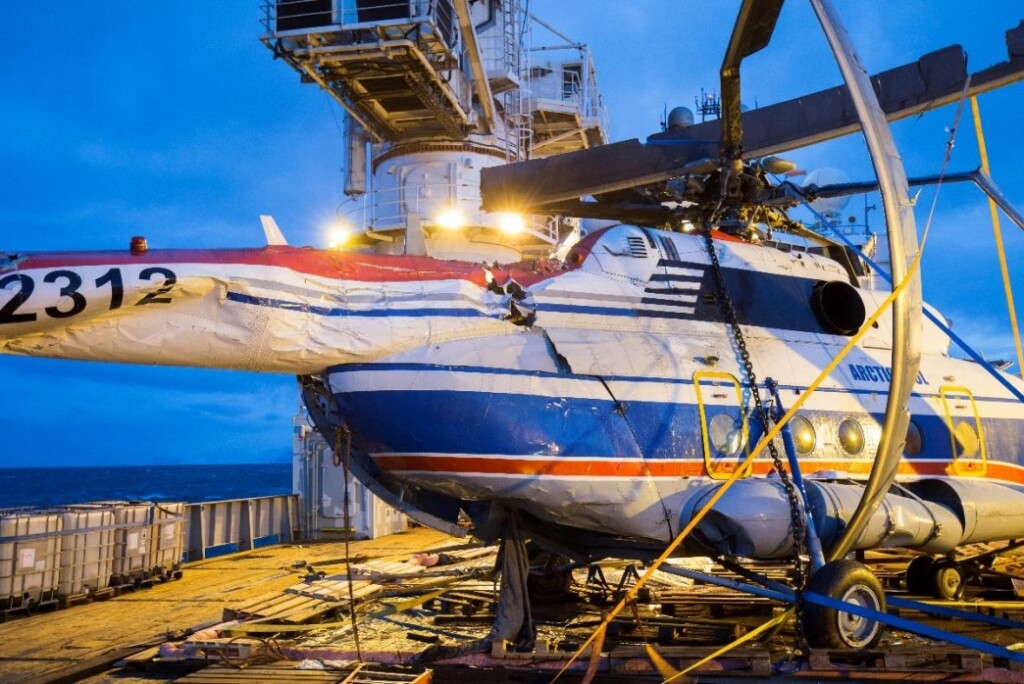

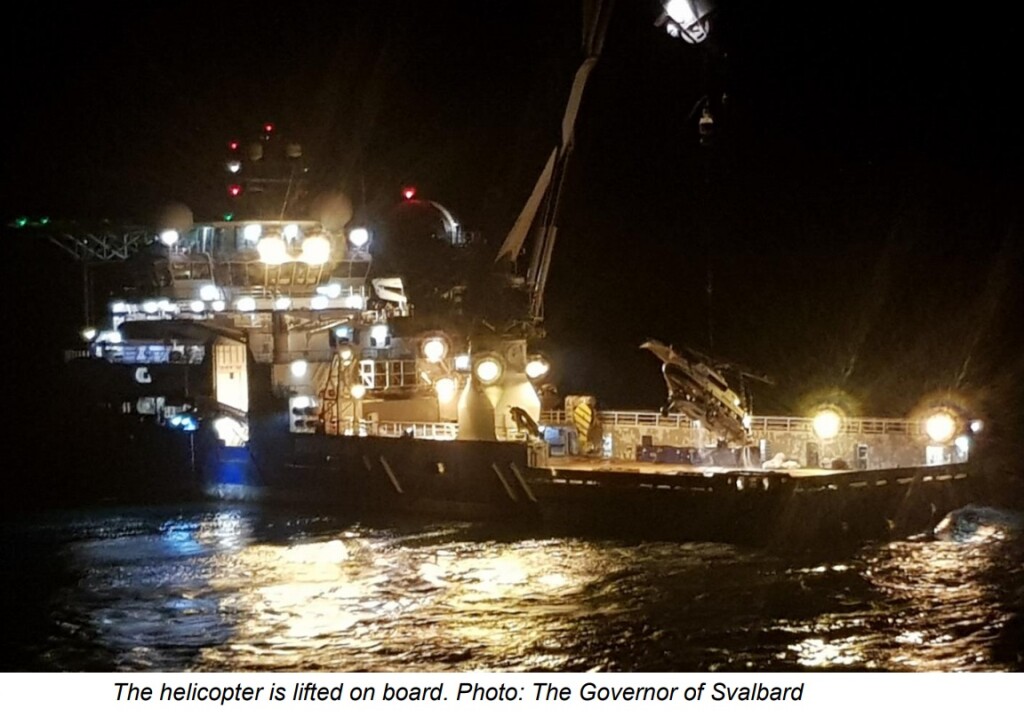

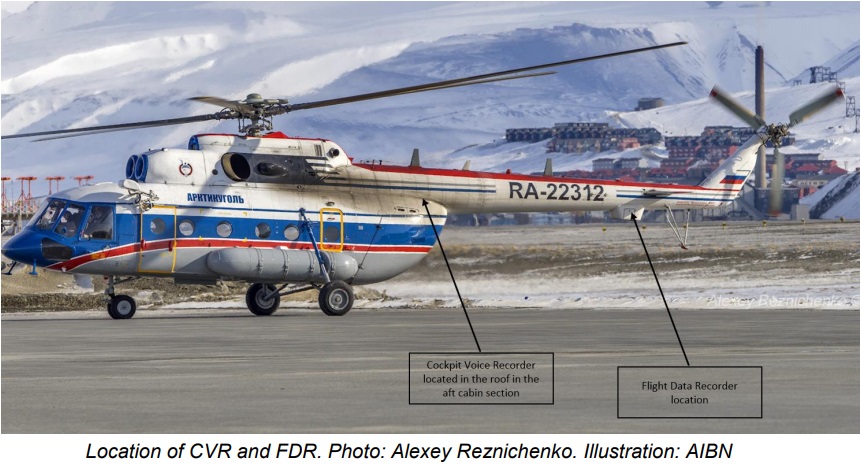

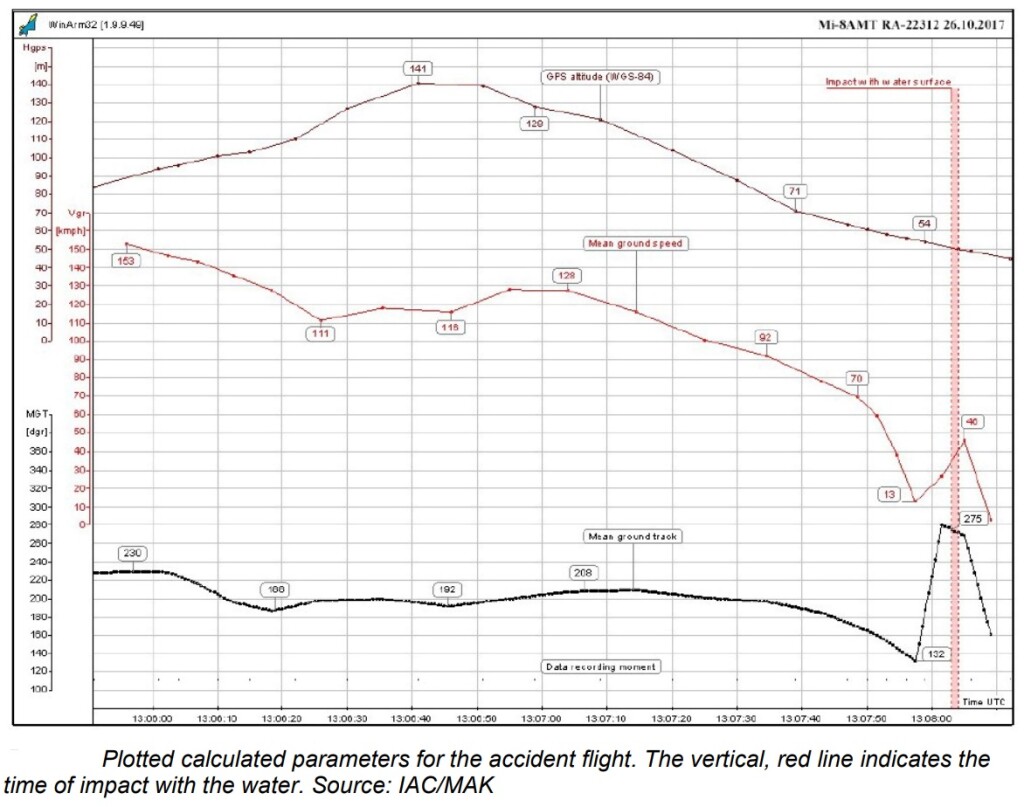
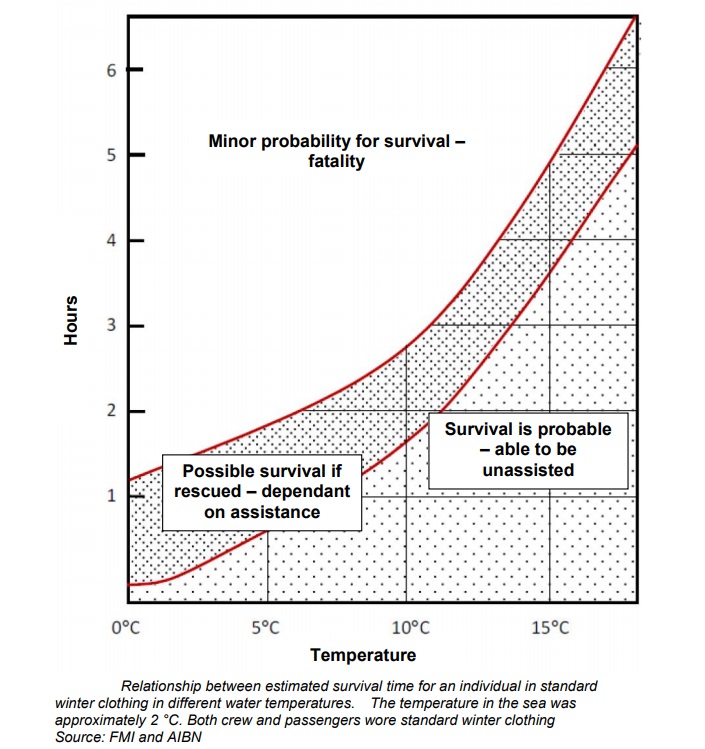
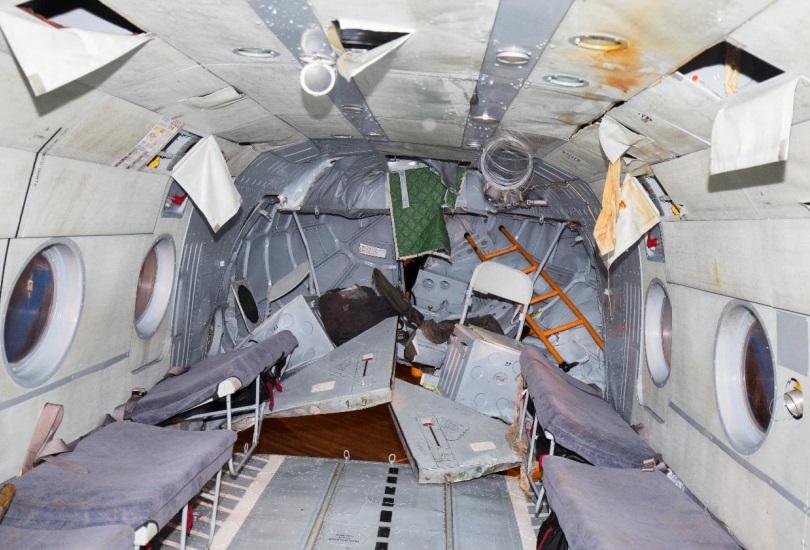
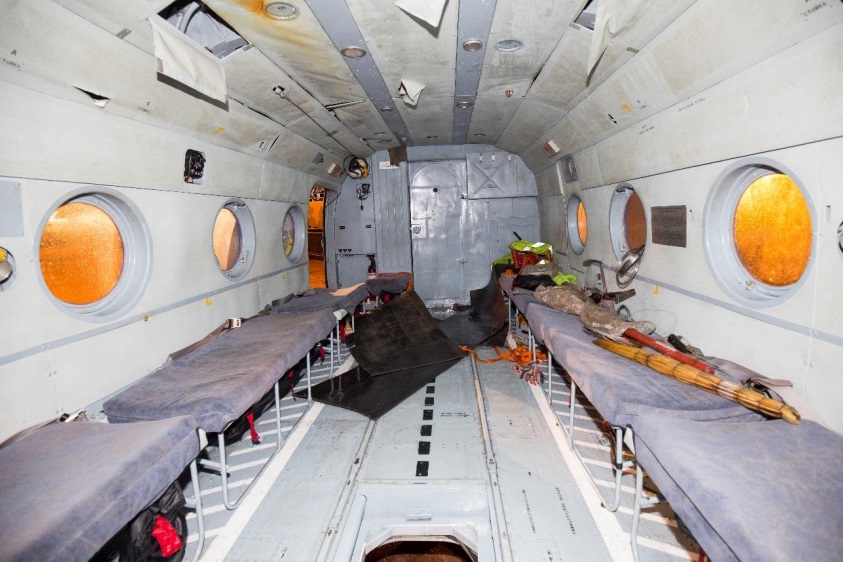
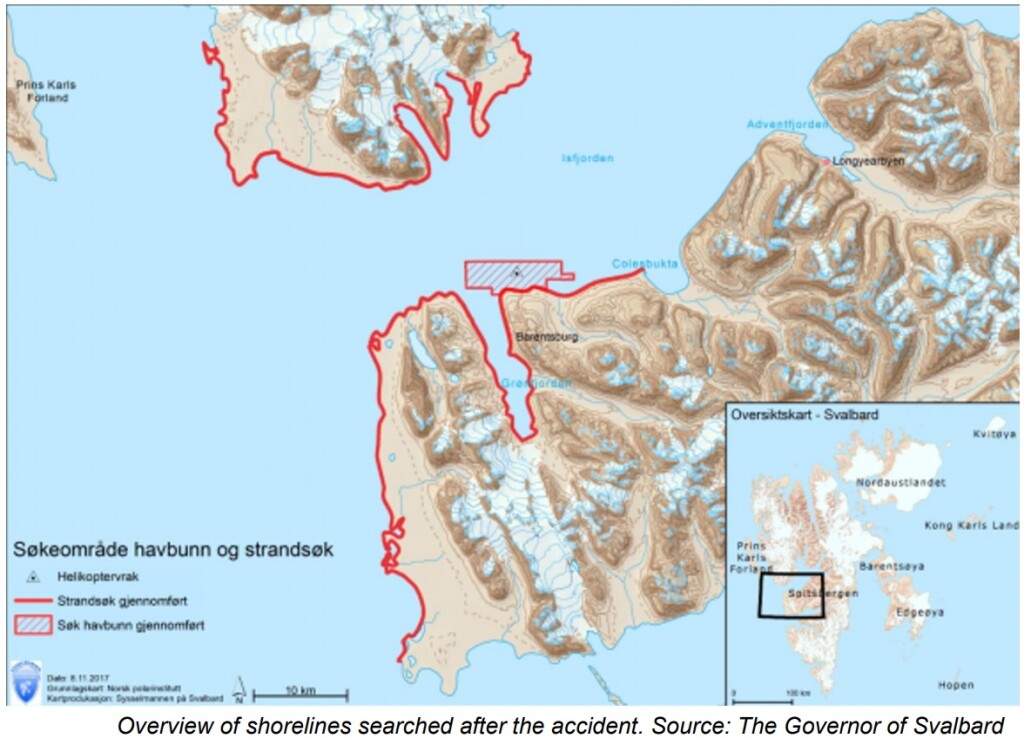
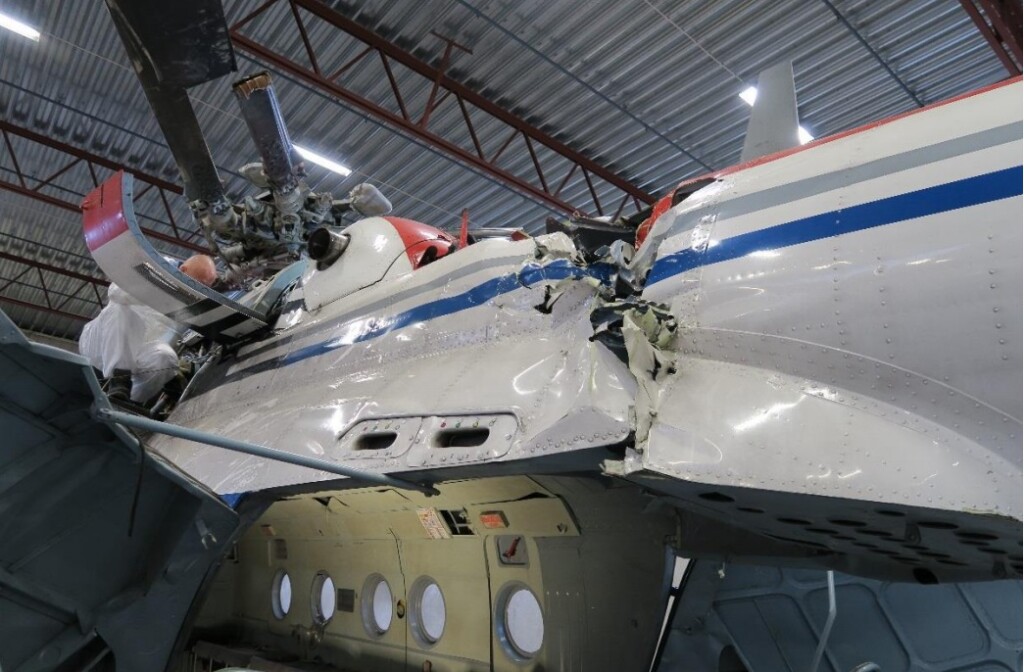
Recent Comments